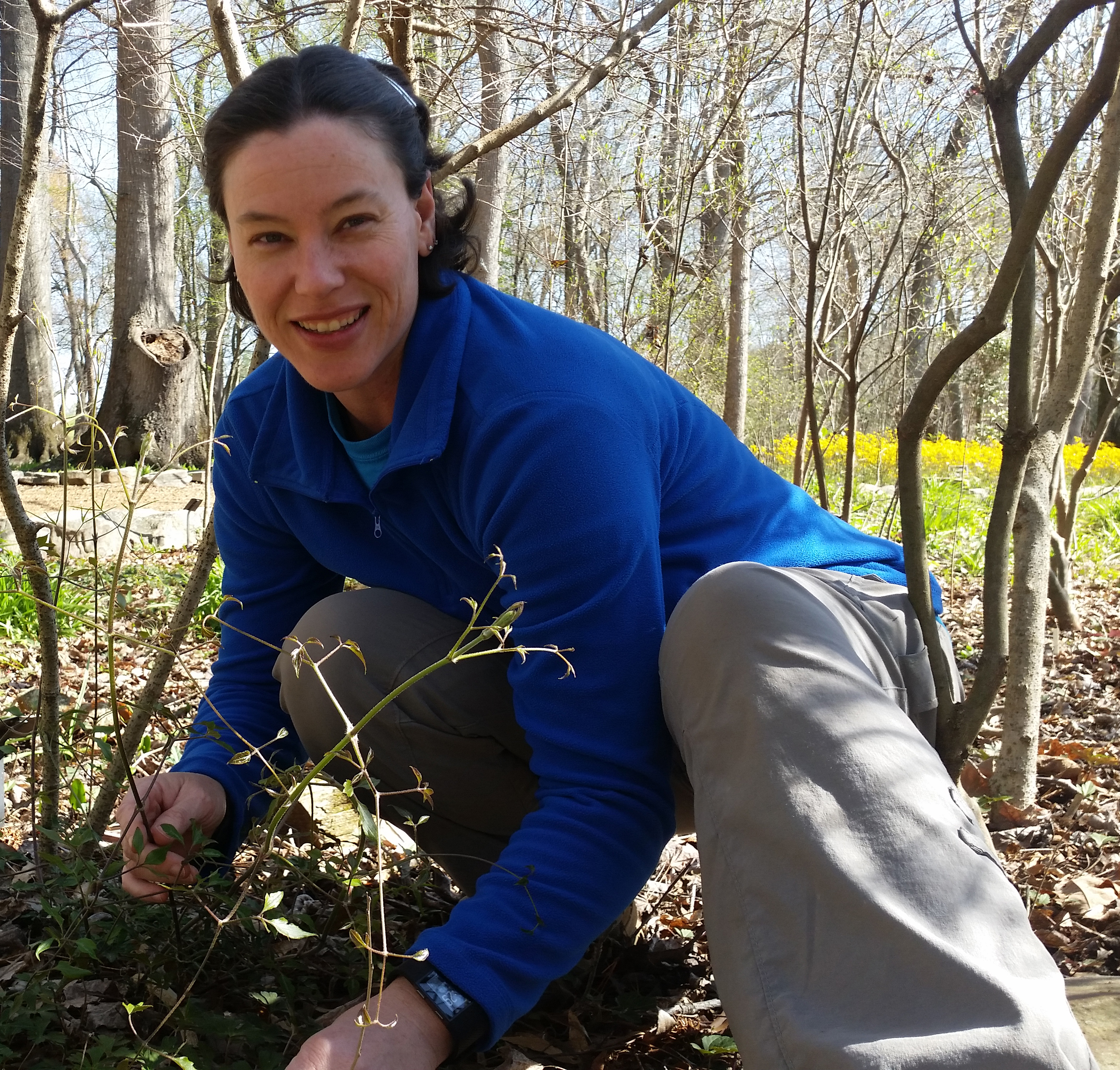 Viola cornuta ‘PAS1122565’ Sorbet® XP Beaconsfield, Horned Violet (Located at the Damson Aquatic Garden)
Viola cornuta ‘PAS1122565’ Sorbet® XP Beaconsfield, Horned Violet (Located at the Damson Aquatic Garden)
Viola cornuta, commonly called horned violet, grows to 6-8” tall and spreads to 12” wide. Round-toothed, ovate, evergreen leaves have large stipules giving it its common name. Although annual here, it is often perennial in northeastern North America. ‘Beaconsfield’ has small, highly fragrant, two-toned flowers bloom in winter and spring in shades of blue, violet and lavender. V. cornuta is native to Spain and the Pyrenees. The genus name means sweet-scented flowers and the specific epithet means horned.
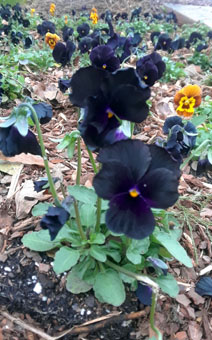 Viola Sorbet™ ‘Black Delight’ (Located in the Children’s Garden)
Viola Sorbet™ ‘Black Delight’ (Located in the Children’s Garden)
This Viola was hybridized to be more tolerant of temperature extremes. It has a compact habit, excellent vigor, and an unusual flower color that is deep velvety purple-black with a tiny yellow eye.
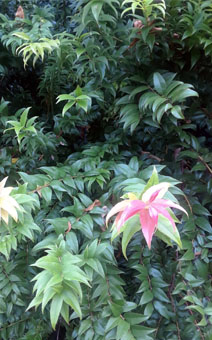 Agarista populifolia, Florida Leucothoe (Located on the Shade Border)
Agarista populifolia, Florida Leucothoe (Located on the Shade Border)
Agarista populifolia is an attractive, upright, arching evergreen shrub native to southeastern North America that grows to 8-12 feet tall and wide. Leaves feature coppery-red new growth and mature to a glossy rich green. It blooms in early summer and has fragrant cream-colored inconspicuous flowers. It likes shade and moist acidic soil making it an excellent addition to the woodland garden or as an informal screen. Formerly known as Leucothoe populifolia, the leaves are poisonous if ingested. Also known as Doghobble, a common name derived from its habit of forming dense thickets which are difficult to penetrate.
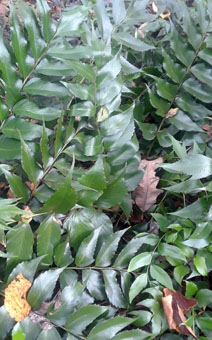 Cyrtomium falcatum, Japanese holly fern (Located on the Shade Border)
Cyrtomium falcatum, Japanese holly fern (Located on the Shade Border)
Cyrtomium falcatum, commonly called Japanese holly fern, is native to eastern Asia, India, southern Africa, and Hawaii. The evergreen fronds of this fern resemble holly leaves with dense, vase-shaped habit up to 2 feet tall. The arching, glossy, dark green fronds are falcate (sickle-shaped) giving it its specific epithet (species name). The spores are wind dispersed and species plants have naturalized in some areas of the southeastern U.S. The genus name comes from the Greek kyrtos, meaning arched, which refers to the ferns growth habit.
 Osmanthus heterophyllus ‘Sasaba’, False Holly (Located across from lower Dogwood Trail)
Osmanthus heterophyllus ‘Sasaba’, False Holly (Located across from lower Dogwood Trail)
Osmanthus heterophyllus ‘Sasaba’, also known as False Holly, is a handsome evergreen shrub up to 15 by 12 feet high and wide. This member of the Olive family, Oleaceae, is drought and deer resistant, has fragrant flowers in early winter and does well in sun or shade. The sharply pointed evergreen leaves look somewhat like a small bamboo and the plant has sterile flowers so it will not spread accidentally from seed. It is well adapted to urban landscapes and can be used in containers, as a hedge, a specimen, or a barrier plant.
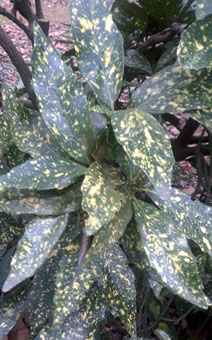 Aucuba japonica, Spotted Laurel (Located on the Shade Border)
Aucuba japonica, Spotted Laurel (Located on the Shade Border)
Aucuba japonica, Spotted Laurel, is a rounded, shade-loving, evergreen shrub in the Garryaceae family, a small family that includes just two genera Garrya and Aucuba. It grows to 6-10 feet tall, but may be kept shorter with pruning. It is native to moist woodland areas in Japan, China, and the Himalayas. Tiny maroon flowers bloom in March-April, but it is typically planted for its glossy, leathery, speckled foliage. The genus name comes from the Latinized version of the Japanese name aukubi for these shrubs. Specific epithet means native to Japan. USDA Zone 7 is in the northern end of its cold hardiness range.

